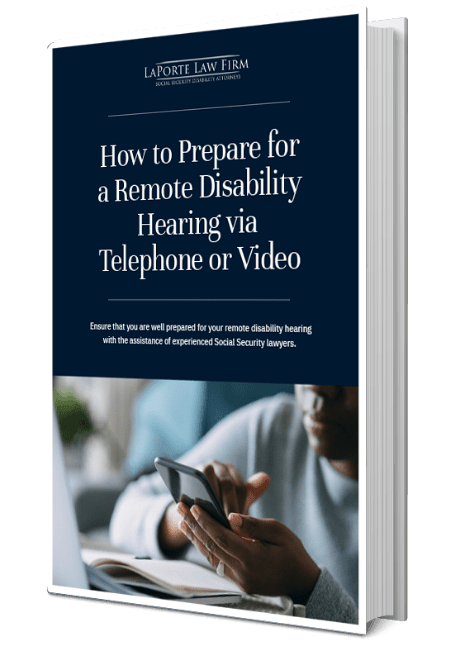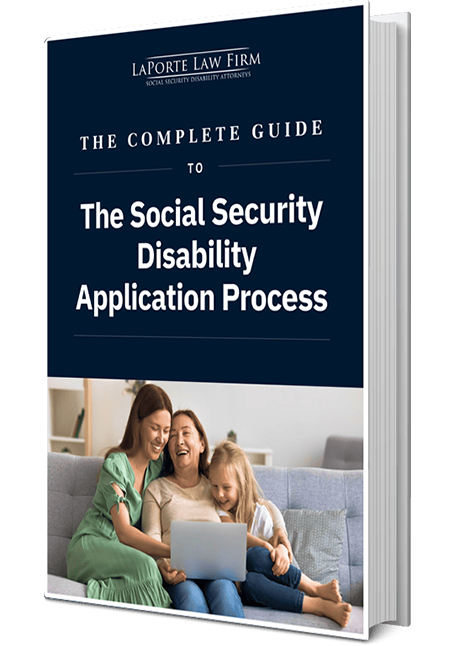
Spinal injuries and disorders can greatly impact your daily life and your ability to work. Common symptoms related to spinal conditions include difficulty standing and walking, trouble with balance, restricted range of motion, and limitations on your ability to lift and carry weight. These symptoms and limitations can greatly impact your ability to perform job duties. In this article, we will discuss common spinal disorders and how the SSA will determine your claim for disability if you suffer from one of these disorders.
Understanding the Social Security Administration’s Disability Requirements
All disability programs have their unique definitions of disability. The Social Security Administration’s disability requirements are a set of criteria used to determine if an individual qualifies for disability benefits. You must have a medical condition that meets the SSA’s definition of disability. This means that you have a condition that is severe enough to prevent you from performing work. You must be unable to work in the same capacity as before the disability, and unable to adjust to other work due to the medical condition. This means that it has lasted, or is expected to last, at least 12 months or result in death.
If you have a spinal disorder that is severe and prevents you from working, you may be eligible for Social Security disability benefits. But first, the SSA needs to determine whether your spinal disorder meets a listed impairment. The SSA has a Blue Book of listed mental and physical impairments. If your spinal condition matches one of the listings, the SSA will consider you disabled. Click here to review the SSA’s listings of relevant spinal conditions.
Common Spine Disorders and Their Potential for Disability Qualification
Spine disorders can severely restrict mobility and cause chronic pain, making it difficult for individuals to maintain employment. Understanding these conditions and their potential for qualifying for Social Security disability benefits is crucial for those seeking support and resources to manage their disabilities effectively.
Herniated disc
A herniated disc occurs when the soft center of a spinal disc pushes through a crack in the tougher exterior. It can cause severe pain and limits movement when the center of the disc pushes against a nerve or the spinal cord. This condition can result in severe, debilitating pain and potential nerve damage, making daily activities difficult and possibly qualifying an individual for disability.
Degenerative disc disease
Degenerative disc disease involves the breakdown of intervertebral discs, which can lead to severe chronic pain and mobility issues. This condition can worsen over time and cause further back problems to develop.
If your degenerative disc disease affects your mobility and therefore significantly impairs your ability to maintain gainful employment , you may meet the requirements of the Blue Book listing 1.15 Disorders of the skeletal spine resulting in compromise of a nerve root. You will be found disabled if you meet the following definition:
A. Neuro-anatomic (radicular) distribution of one or more of the following symptoms consistent with compromise of the affected nerve root(s):
- Pain;
- Paresthesia; or
- Muscle fatigue. AND
B. Radicular distribution of neurological signs present during physical examination or on a diagnostic test and evidenced by 1, 2, and either 3 or 4:
- Muscle weakness;
- Sign(s) of nerve root irritation, tension, or compression, consistent with compromise of the affected nerve root;
- Sensory changes evidenced by:
- Decreased sensation; or
- Sensory nerve deficit (abnormal sensory nerve latency) on electrodiagnostic testing; or
- Decreased deep tendon reflexes. AND
C. Findings on imaging consistent with compromise of a nerve root(s) in the cervical or lumbosacral spine. AND
D. Impairment-related physical limitation of musculoskeletal functioning that has lasted, or is expected to last, for a continuous period of at least 12 months, and medical documentation of at least one of the following:
- A documented medical need for a walker, bilateral canes, or bilateral crutches or a wheeled and seated mobility device involving the use of both hands;
- An inability to use one upper extremity to independently initiate, sustain, and complete work-related activities involving fine and gross movements, and a documented medical need for a one-handed, hand-held assistive device that requires the use of the other upper extremity or a wheeled and seated mobility device involving the use of one hand; or
- An inability to use both upper extremities to the extent that neither can be used to independently initiate, sustain, and complete work-related activities involving fine and gross movements.
Spinal Stenosis
Spinal stenosis is a narrowing of the spaces within your spine, which can put pressure on the nerves. This can lead to pain, numbness, or muscle weakness that can be disabling. If severe enough, this condition may qualify you for disability. You will meet SSA’s criteria for disability if you meet the following definition of lumbar stenosis:
A. Symptom(s) of neurological compromise manifested as:
- Nonradicular distribution of pain in one or both lower extremities;
- Nonradicular distribution of sensory loss in one or both lower extremities; or
- Neurogenic claudication. AND
B. Nonradicular neurological signs present during physical examination or on a diagnostic test and evidenced by 1 and either 2 or 3:
- Muscle weakness;
- Sensory changes evidenced by:
- Decreased sensation; or
- Sensory nerve deficit (abnormal sensory nerve latency) on electrodiagnostic testing; or
- Areflexia, trophic ulceration, or bladder or bowel incontinence.
- Decreased deep tendon reflexes in one or both lower extremities. AND
C. Findings on imaging or in an operative report consistent with compromise of the cauda equina with lumbar spinal stenosis. AND
D. Impairment-related physical limitation of musculoskeletal functioning that has lasted, or is expected to last, for a continuous period of at least 12 months, and medical documentation of at least one of the following: 1. A documented medical need for a walker, bilateral canes, or bilateral crutches or a wheeled and seated mobility device involving the use of both hands; or 2. An inability to use one upper extremity to independently initiate, sustain, and complete work-related activities involving fine and gross movements, and a documented medical need for a one-handed, hand-held assistive device that requires the use of the other upper extremity or a wheeled and seated mobility device involving the use of one hand.
Scoliosis
Scoliosis is a sideways curvature of the spine. While mild cases may not qualify, severe scoliosis that interferes with physical function and causes pain, thereby preventing you from performing your past relevant work or transferring your skills to perform other full-time substantial gainful activity, could potentially qualify for disability benefits.
Kyphosis
Kyphosis is a curvature of the spine that causes a bowing or rounding of the back. A severe case can lead to pain and breathing difficulties. Kyphosis is rarely disabling on its own but if it severely limits a person’s ability to work, kyphosis could potentially qualify for disability.
Osteoporosis
Osteoporosis makes bones weak and brittle, which also affects the vertebrae in the spine. This can lead to compression fractures and severe pain. Osteoporosis by itself does not typically meet the standards of disability. However, it can cause complications, such as fractures, that can impact your daily activities, quality of life, and work activity.
Ankylosing spondylitis
Ankylosing spondylitis is an inflammatory disease that when severe, can cause some of the small bones in the spine to fuse. This results in a hunched-forward posture and can cause severe pain and limit physical function, potentially qualifying for disability.
Spinal cord injury
Injuries to the spinal cord can result in partial or complete loss of motor control and sensation. Depending on the severity and location of the injury, this can qualify for disability. Those who cannot work due to a disability and whose condition has lasted or can be expected to last 12 continuous months may be eligible for disability benefits. But if your injury has improved with treatment and rehabilitation, you may not meet the SSA’s durational requirements.
Tips for a Successful Disability Claim
Filing a successful disability claim for a spine disorder requires careful preparation and documentation. It’s essential to gather all relevant medical records, understand the specific requirements of your disability, and seek professional guidance if needed.
Understand the SSA’s definition of disability
Know that the SSA only considers you disabled if you’re unable to work due to a severe condition expected to last at least one year or result in death or if your spinal disorder meets one of the SSA’s listing of impairments.
Keep a detailed medical documentation
The SSA reviews your medical records to determine whether your spinal condition is disabling. Many spinal conditions are diagnosed and documented through objective measures such a CAT scan, an MRI, or an X-ray. Your medical records will also include documentation of your physician’s notes and treatment records, such as surgical reports. You will need this objective medical evidence to show the severity of your condition. Ensure you have comprehensive medical records that clearly show your diagnosis, treatment plan, and how the disorder limits your abilities.
Get consistent medical treatment
Regular treatment from a licensed healthcare provider strengthens your claim. The SSA will want to see ongoing documentation of your spinal condition. It shows your commitment to managing your condition and provides updated medical records for SSA evaluation.
Obtain support from your physician
A supportive statement from your doctor detailing how your condition limits your ability to work can significantly help your claim. These opinions serve as valuable evidence that better explains your medical condition and how it affects your ability to do your past work or other work. Your case can be strengthened by providing a Residual Functional Capacity (RFC) form from your treating physician. An RFC is an assessment of what you are able to do despite your disability. Completing this form helps the SSA better understand your spinal condition and its limitations on your ability to work, such as your standing, walking, sitting, and lifting capacity, which are work activities that your condition may impact.
Hire a disability attorney
A knowledgeable disability attorney can guide you through the process, help gather necessary documentation and increase your chances for approval. They can also represent you in your initial application or on appeal if that’s denied. At LaPorte Law Firm, we have experience representing claimants with severe spinal disorders obtain the benefits they deserve. If you have questions about your claim, you can contact our firm for a free consultation.
Prepare for a possible appeal
Many initial disability claims are denied. Be prepared to appeal if necessary, providing additional medical evidence or attending a hearing before an administrative law judge.
If you’re struggling with a spine disorder and unsure if you qualify for disability benefits, contact LaPorte Law Firm today for a free consultation. Let our experienced team help you navigate the process and secure the benefits you deserve.
FAQs
How severe does a spine disorder need to be to qualify for disability?
To qualify for disability, your spinal disorder must be severe enough to prevent you from performing your past work or transferring your skills to other work in the national economy. To be eligible for benefits, your condition must be disabling for at least 12 continuous months.
What evidence is needed to prove a spine disorder for disability benefits?
Medical documentation of your spinal disorder is essential to a disability claim. It is important to have objective testing, such as MRIs or X-rays that document the severity of your spinal disorder. It is also important to have treatment notes that demonstrate the limitations from your condition, including in-person physical examinations such as straight leg raise testing. Ongoing medical documentation is also important. While your claim is pending, the SSA will continue to review updated treatment records to determine the ongoing severity of your condition.
How long does it take to get approved for disability with a spine disorder?
Once you submit your application for benefit, it takes approximately 6–8 months for the SSA to make an initial decision. If your initial claim is denied, you can file an appeal. At the first appeal stage, it takes the SSA approximately 3-5 months to make a decision. If your first appeal is denied, you can file a second appeal. Right now, it’s taking approximately 6– 9 months to receive a decision. The second appeal is a hearing before an administrative law judge. The wait time for a hearing varies significantly by hearing office. In 2024, on a national average, claimants wait approximately 12 months for a hearing decision.















